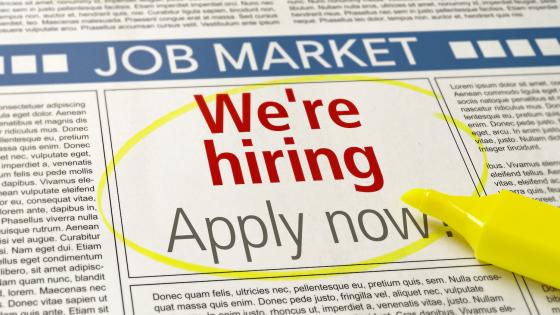How much weight do workers give to wages in their decision to apply for a job? Do wages play a role at all in the allocation of workers to firms? Perhaps surprisingly, many theoretical approaches to the labour market do not attribute a prominent role to wages in the process of matching workers to firms. A common assumption, for example, is that workers lack access to information about the wage at the time when they apply and therefore search ‘at random’. Wages are negotiated ex post, after the match has taken place. This is of course at odds with the real world, where a large portion of vacancies include posted wages. Workers might disregard such wage information if they consider it meaningless cheap talk. But if they consider it informative, it is then plausible that wage announcements affect how many workers apply.
Theories and existing evidence
There are two important theories in labour economics which hypothesise about how wages may affect applications in a world where job seekers need to actively search for jobs. A first theory hypothesises that job seekers sample vacancies randomly over time, observe the wage that is offered, and only accept a job if it exceeds their reservation wage (e.g. McCall 1970, Burdett 1978, Burdett and Mortensen 2000). If one adds the innocuous assumption that workers would not bother to apply for jobs with wages that they would not be willing to accept, then a higher posted wage always leads to more applications, and if a job seeker applies to a low-wage vacancy, she would also apply to a similar vacancy with a higher wage.
A second theory (e.g. Peters 1991, Burdett et al. 2000, Wright et al. 2017) emphasises the fact that in the real world, workers cannot apply to every job because it is costly to write and send applications. In other words, they need to choose where to apply, and higher wages are more attractive and direct more job applications there. Such ‘directed search’ usually implies a high level of market efficiency. While higher wages attract more applicants, job seekers also realise that the increased competition leads to a lower probability of getting the job. Consequently, some job seekers prefer to apply to a lower-wage job even if a higher wage job exists.
Contrary to these predictions, empirical studies based on observational data show that a higher posted wage leads to less applicants (Faberman and Menzio 2018), even when one compares jobs within the same occupation. However, using online job search data, Marinescu and Wolthoff (2014) show that by only comparing vacancies with the exact same job title – that is, jobs that are very similar to each other – that the relationship reverses and higher wages lead to more applicants.
The challenge with empirically testing the role of wages is that it is very difficult to isolate the effects of wages from other characteristics of the job. Two vacancies with different wages are rarely identical in all other respects. Even in the study by Marinescu and Wolthoff (2014), most vacancies contain text describing the job which may be very different for jobs that post higher wages than for similar jobs that post lower wages.
To understand the pure role of wages, one needs to compare jobs that are nearly identical except for the wage posted. This is close to impossible to do with observational data.
Our experiment
To credibly test how job seekers respond to posted wages, we conducted a randomised experiment in which pairs of identical vacancies were posted with different wages (Belot et al. 2018). While basic random search predicts no relationship between wage offers and applications, the two other theories would both predict that in each pair the vacancies with higher wages would attract more applications. The first theory would predict that if someone applies to the low-wage vacancy, she should also apply to the high-wage equivalent. The second theory, in contrast, would predict that some people may only apply to the low-wage vacancy.
The vacancies that we posted covered a wide range of occupations. While they were artificial vacancies (for jobs that did not exist), they were included as a small percentage within a large set of real vacancies. Real job seekers participated in the study by searching for jobs at the University of Edinburgh computer lab, using a custom-made search interface that searched both over the large set of real vacancies (the same as offered by Universal Jobmatch in the UK), and over our small set of artificial vacancies. Using this set up allowed us to post pairs of vacancies, which were identical in all respects except for the wage.1 This methodology is similar to the well-known audit studies of employers that are confronted with randomly varied resumes from fictitious applicants (e.g. Bertrand and Mullainathan 2004), except we applied it to the other side of the market by confronting job seekers with different vacancies.
The benefit of observing job seekers performing their job search on our search platform is that we could track their search behaviour in detail. For ethical considerations, participants were aware and consented to the small number of research vacancies that we introduced, but this fraction should be small enough as not to affect their usual job search pattern. Again for ethical reasons we did not let participants send actual applications to artificial vacancies. However, we observed:
- whether the vacancy appeared in their search results (whether it was listed on their screen);
- whether they clicked on the vacancy for more information; and
- whether they saved the vacancy in their account.
Both clicking on the vacancy and ‘saving’ the vacancy can be considered as outcomes of interest and as proxies for wanting to apply.2
Our findings
The results from the experiment show that a higher posted wage significantly increases the number of job seekers interested in the job. The elasticity is around 0.9. While the artificial vacancies cover a wide range of occupations, this finding is quite similar to what was found in an experimental study on local government positions in Mexico (Dal Bo et al. 2013). Also in line with previous research, we find that when one ignores the experimental vacancies and simply compares real vacancies (controlling for occupation), the relationship between posted salary and job seeker interest becomes negative.
Second, we consider individuals that have seen both vacancies of a pair on their screen. While the higher vacancy attracts more interest on average, we find that a significant share of individuals demonstrate interest only in the lower-wage vacancy. This finding remains even when considering only individuals for which the higher wage vacancy appeared higher on their list of search results.
We argue that this behaviour can best be explained by individuals taking competition for a job into account when deciding where to apply. Of course, alternative explanations exist, such as the higher posted wage being interpreted as a signal of adverse working conditions. We conducted a complementary survey (on a different sample of the working population), where participants were asked to rate each of the experimental vacancies in terms of expected competition, expected required quality to get the job, and expected non-monetary working conditions. Higher paid jobs rank significantly higher on all three dimensions, which is contrary to compensating differentials for adverse working conditions. It is in line with the idea that firms use attributes (i.e. pay, but also working conditions) to attract workers, but that this comes at the cost of higher competition and requirements on the applicants. We also find (weak) evidence that higher perceived competition increases the probability that a job seeker is only interested in the low wage job.
These findings seem qualitatively in line with the second theory (models of directed search). To see whether such models also generate comparable magnitudes, we compare results from a calibrated directed search model with multiple job applications and on-the-job search to the main empirical estimates (the elasticity with respect to wage, and the share of individuals only interested in the lower wage jobs). The calibrated model produces comparable numbers.
These results are important for our understanding of the role of posted wages in the matching process between job and job seekers. They suggest that posted wages do indeed have an allocative function. Furthermore, analysing which job seekers are more likely to pursue the higher wage vacancies can potentially shed light on observed wage differentials (for example by gender or ethnicity), but such analysis is beyond the scope of the current study due to limited sample size.
References
Belot, M, P Kircher and P Muller (2018), “How wage announcements affect job search: A field Experiment,” IZA, Discussion paper 11814
Burdett, K (1978), “A theory of employee job search and quit rates,” American Economic Review 68(1): 212–220.
Burdett, K and D Mortensen (1998), “Wage differentials, employer size, and unemployment,” International Economic Review 39(2): 257–273.
Burdett, K, S Shi and R Wright (2000), “Pricing and matching with frictions,” Journal of Political Economy 109(5): 1060–1085.
Bertrand, M and S Mullainathan (2004), “Are Emily and Greg more employable than Lakisha and Jamal? A field experiment on labor market discrimination,” American Economic Review 94(4): 991–1013.
Dal Bó, E, F Finan and M A Rossi (2013), “Strengthening state capabilities: The role of financial incentives in the call to public service,” Quarterly Journal of Economics 128(3): 1169–1218.
Faberman, R J and G Menzio (2018), “Evidence on the relationship between recruiting and the starting wage,” Labour Economics 50: 67–79.
Marinescu, I and R Wolthoff (2016), “Opening the black box of the matching function: The power of words,” NBER, Working paper 22508.
McCall, J J (1970), “Economics of information and job search,” Quarterly Journal of Economics 84(1): 113–126.
Peters, M (1991), “Ex ante price offers in matching games: Non-steady states,” Econometrica 59(5): 1425–1454.
Wright, R, P Kircher, B Julien and V Guerrieri (2017), “Directed search: A guided tour,” NBER Working paper 23884.
Endnotes
[1] The text was reshuffled a bit within the pair and the employer information was removed to prevent job seekers from identifying the vacancies as artificial. This is not peculiar because a large share of real vacancies do not reveal employer information, only containing an ‘apply’ button, which would refer the job seeker to the application website.
[2] Participants were informed at the end of each search session in case they had saved an artificial vacancy, before they were able to actually apply.






